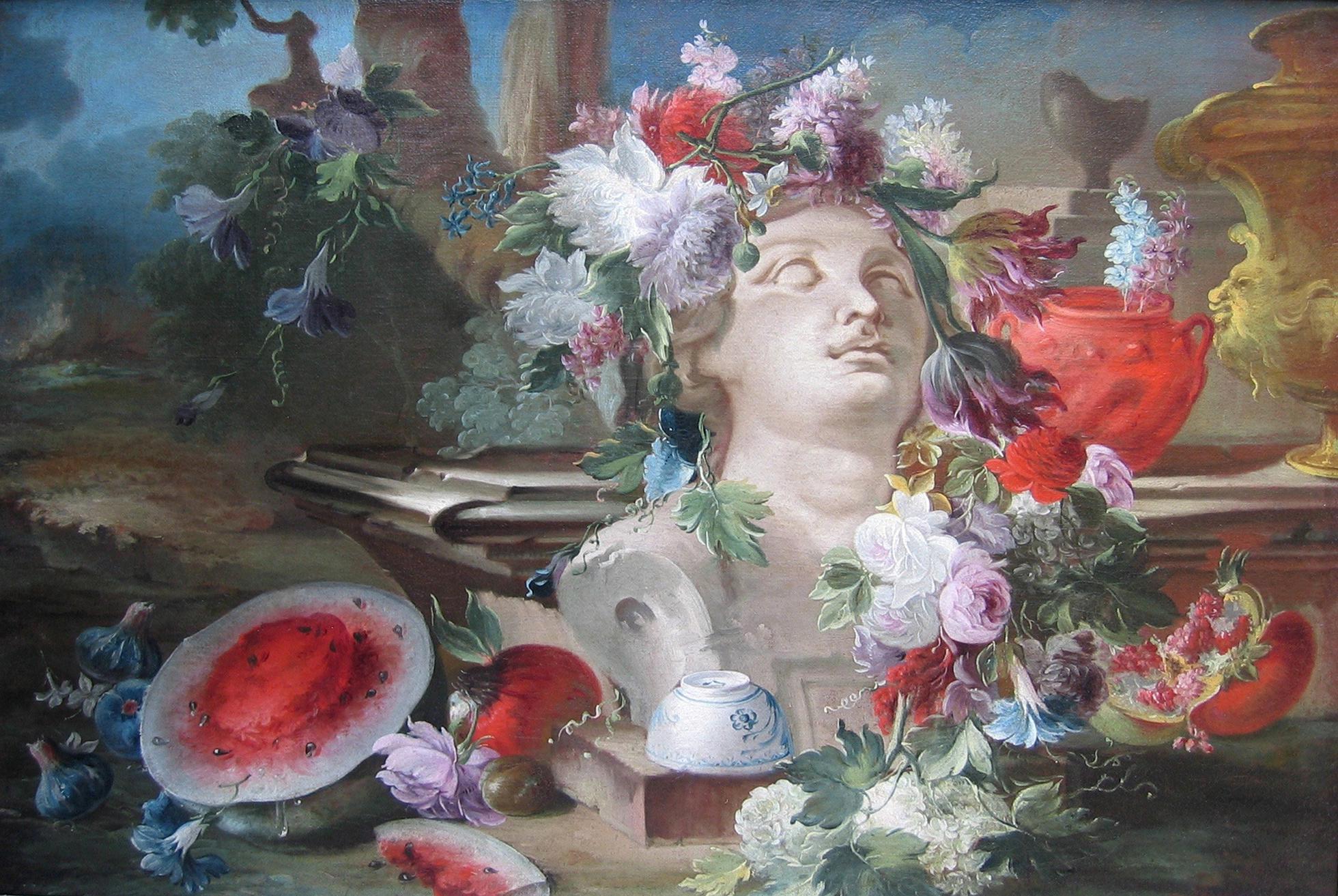Still life of Flowers garlanded around a marble Bust, with a cut Melon and Pomegranates near a stone Plinth
Still life of Flowers garlanded around a marble Bust, with a cut Melon and Pomegranates near a stone Plinth
Second half of the 18th Century
Neapolitan School
Oil on canvas
Francesco Lavagna was an Italian 18th century painter of still-life and flowers based in Naples. He was very likely a relative of the Neopolitan flower painter Guiseppe Lavagna, 1684 - 1724, who was pupil of Andrea Belvedere, but was as was often the case with artists of that period, few details survive.
This painting is an example of the late 17th early 18th century style of painting in Naples. Inspired by the important painter, Luca Giordano (called Fa Presto) 1632-1705, artists would sometimes collaborate and pool their talents to produce a work. There is an example in La Natura Morta in Italia, Volume II page 980, figure 1195, which bears a striking resemblance to this painting.
The placing of the objects and the luminosity is rather like a stage set. The influence is Baroque in style with flowers cascading like water and though the bust is in the manner of Giordano, the flowers are very close to Gasparo Lopez (called Gasparo di Fiori) a Neapolitan painter 1650-1732 and pupil of Andrea Belvedere, and that of Nicolo Casissa who died in Naples in 1730. Indeed the Museo Nazionale di Trapani has a Casissa very similar to the two paintings mentioned above.
Still life painting of this period could often be interpreted in several ways. Often they were solely studies of nature at its gloried best but isolated in a rather unnatural setting. The types of flowers, vegetables, fruit or other props were chosen simply because they pleased the artist and were familiar to him. However, they could be used to convey a message and probably the Vanitas still life is the best known example. Much favoured by the Dutch in the 17th century,
they reminded the viewer that objects and possessions were always temporal and could not defer the inevitability of death. Particularly in the Northern European tradition, a skull often accompanied symbols of wealth and learning such as jewellery or books and musical scores.
Flowers by themselves, sometime with drops of dew, were a reminder of the passing of time. In this picture, the fallen bust could augment this message. However the pomegranate with its multitude of seeds was an allusion to rebirth and resurrection popular as a Christian symbol, albeit one borrowed from classical mythology after its association with Proserpine who returned each Spring to regenerate the Earth.
Thus this painting can be seen solely as a pleasing still life or as an allegory of life's continuous cycle.
Bibliography:
Natura Morta in Italia
Benezit - Dictionaire des Peintres
Painting in Naples from Caravaggio to Giordano 1606-1705
Dimensions:
RELATED ITEMS























